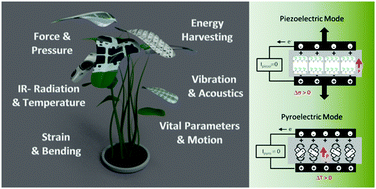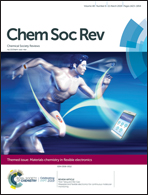Route towards sustainable smart sensors: ferroelectric polyvinylidene fluoride-based materials and their integration in flexible electronics†
Abstract
With the advent of the Internet of Everything (IoE) era, our civilization and future generations will employ an unimaginable complex array of electronics and sensors in daily life. Ferroelectric polymers represent a core group of materials supporting the fast development of IoE, and their functionality, straightforward processing and unmatched versatility make them prime candidates for integration in multifaceted devices. Since they are highly selective, highly responsive, highly scalable, self-powering and compatible with flexible and stretchable substrates, they can be easily integrated with various electronics into numerous stand-alone objects and even into skin as sensors for monitoring diverse mechanical, thermal and vital parameters. They can also be used in combination with other sensor materials for harvesting waste energy from mechanical and thermal sources, for data storage and for actuation. This article reviews the up-to-date accomplishments in the ferroelectric polymer field, with focus on materials involving polyvinylidene fluoride (PVDF), and also discussed both their current advancement and future growth in the development of sustainable systems.

- This article is part of the themed collection: Materials chemistry in flexible electronics


 Please wait while we load your content...
Please wait while we load your content...